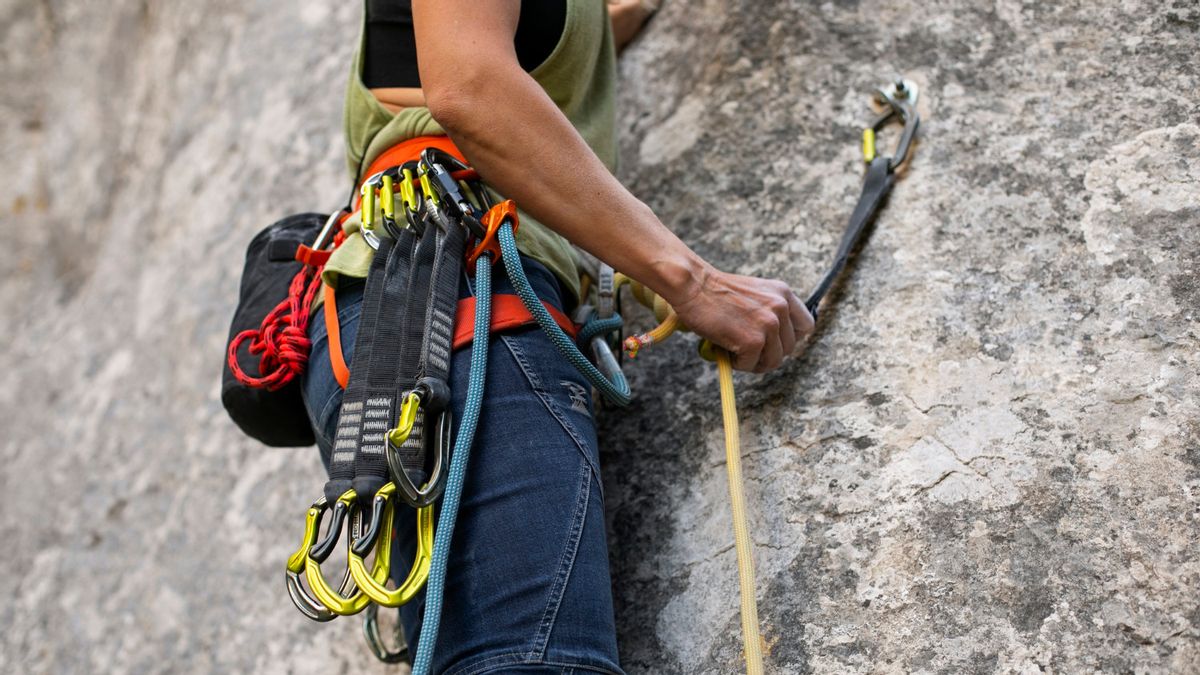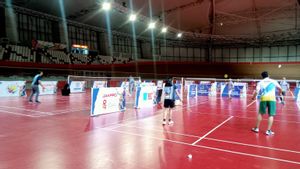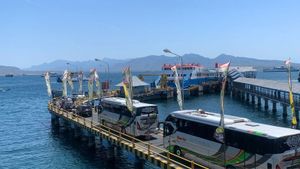YOGYAKARTA - Rock climbing sports are loved by people who like challenges and stimulate adrenaline. This extreme sport requires special techniques or skills to be able to do it safely. One of the things that must be controlled by climate is anchor. So what is anchor in rock climbing?
Climabers, especially beginners, are required to learn the techniques used when climbing cliffs or rock climbing. Mastering anchor is very important because it is related to rock climbing security equipment. Before you go through this challenging sport, you need to know what anchoring is in rock climbing and how to apply it?
Anchors are generally applied in activities or activities that have a high risk. Anchors are often used in outdoor activities and sports in the wild, especially those related to high, steep, and quite difficult terrain. In addition to being used in rock climbing, anchors are also used for other outdoor activities such as aftershocks (caving) and vertical rescue actions.
Anchor rock climbing is a security system in installation of ropes related to heights, such as cliffs, caves, mountains, valleys, and so on. There are several techniques in making anchors for rock climbing, starting from installing natural media and artificial anchors such as special equipment.
In rock climbing, anchor is the point where all rope systems depend. From the installation media, there are two types of anchors, namely natural anchor and artificial anchor. The second can be applied in rock climbing activities by looking at the terrain that is traversed.
Both natural anchors and artificial anchors, both have their differences and strengths and disadvantages respectively.
Natural anchor is a barrier from natural media that utilizes objects that exist in nature. Natural anchors can be in the form of rocks or holes on cliff walls, tree trunks, and other hard media.
Natural anchors are usually used in style or technique of tracing trafficking. For example, you climb in a trafficking climbing style, not always the points to be installed anchor according to what is expected. This greatly affects the quality of the anchor made.
Artificial anchors are anchors from artificial media such as using special equipment for rock climbing. This type of anchor is deliberately installed at certain points with the help of special equipment for rock climbing, such as bolts, cams/friends, nuts, and so on. The equipment is mounted on a stake, inserted or drilled on a cliff surface. Ancor that has been embedded will be used as a hook of a carabiner, webbing, or runner.
There are various anchor manufacturing techniques that you can choose from in preparation for rock climbing in nature. The following are the variations in anchor creation based on the ropes used:
The making of this anchor is done without connecting or unifying the two ends of the rope. This type of anchor is made using a karmantel rope, which is usually static or webbing with a lattice length of 10 meters or more.
The making of this anchor uses the same size and static rope or webbing. However, before being installed into an anchor, both ends of the rope are attached or put together first to form a large rope circle.
This anchor is made with several ropes / webbing with a size of 3 meters. Each rope is called in the loop, namely 1 rope 1 piece anchor and so on.
You can also directly use the climbing rope for the installation of anchors under certain conditions. Usually this anchor creation technique is needed for rappeling or ascending.
The making of this anchor is slightly different because the position of the belayer is directly at the anchor load point. From the position of the belayer tool, it is divided into two, namely the belay tool is installed together with a hardness and installed separately with a hardness.
Demikianlah review tentang apa itu anchor dalam rock climbing dan teknik pembuatannya. Para climate wajib memahami cara pembuatan anchor demi keamanan saat mencapai tebing. Anchor berguna untuk meminimalisir risiko atau agar tidak terjadi kecelakaan dalam aktivitas pejakir tebing.
Stay up to date with the latest domestic and other overseas news on VOI. You present the latest and most updated nationally and internationally.
The English, Chinese, Japanese, Arabic, and French versions are automatically generated by the AI. So there may still be inaccuracies in translating, please always see Indonesian as our main language. (system supported by DigitalSiber.id)













